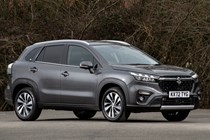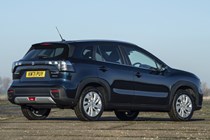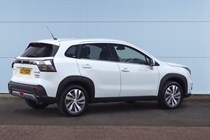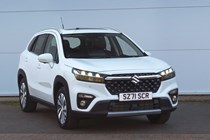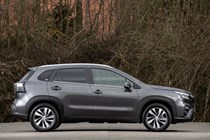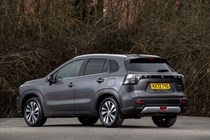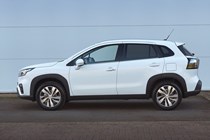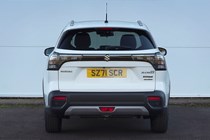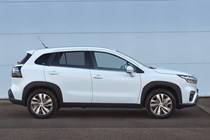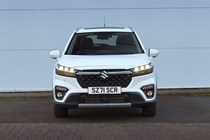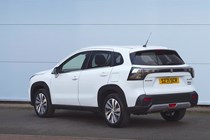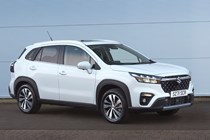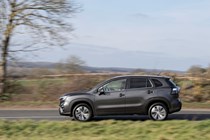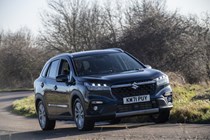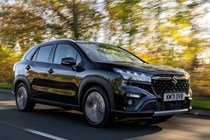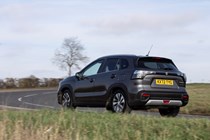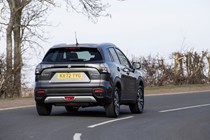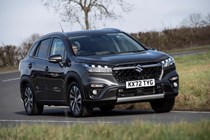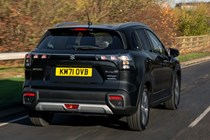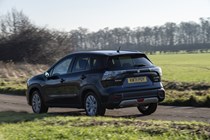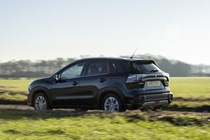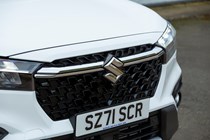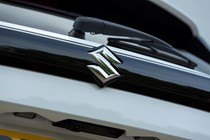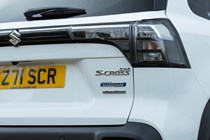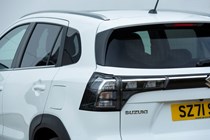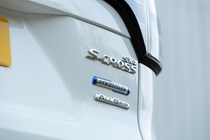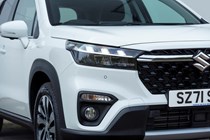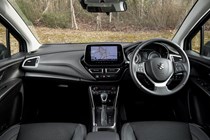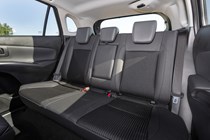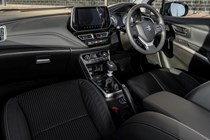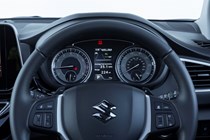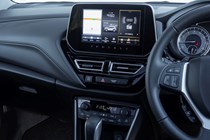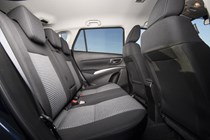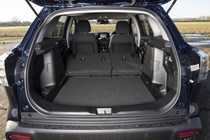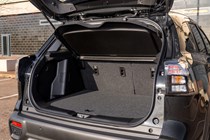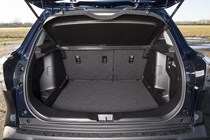Suzuki S-Cross engines, drive and performance
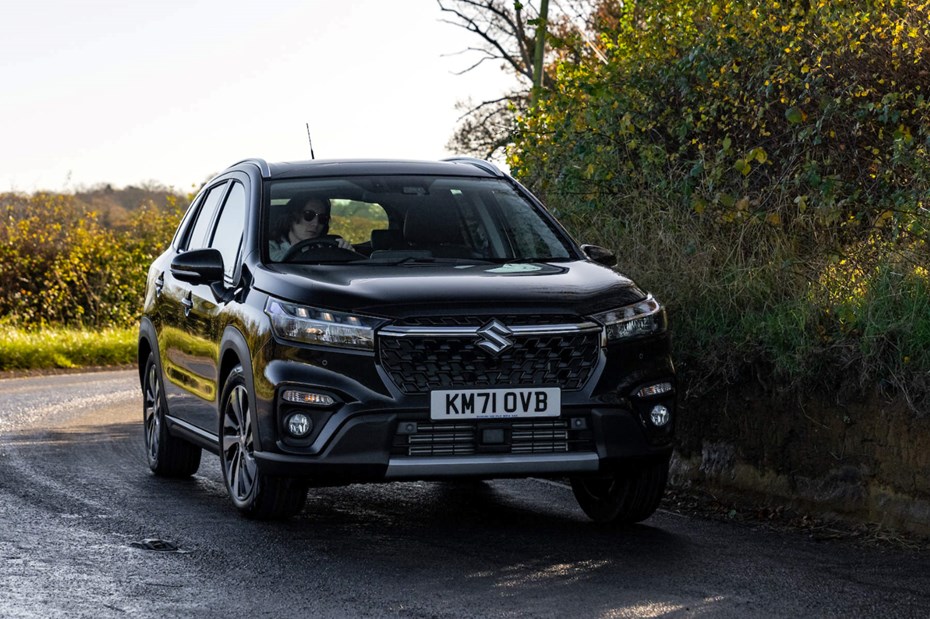
- Choice of mild and full hybrid petrols
- Mild hybrid is nippy and fun
- Full hybrid is a little disappointing
Mild hybrid engine
The cheapest Suzuki S-Cross features a turbocharged 1.4-litre four-cylinder mild hybrid petrol engine. Essentially, this is a conventional combustion engine which gets a little bit of assistance from a tiny electric motor and a dinky battery pack.
The electrical component isn’t powerful enough to drive the car by itself. Instead, the system is focused on improving the petrol engine’s efficiency, filling gaps in the power band where the engine isn’t performing its best. It’s a smooth system that works great in the real world.
The engine is a peach. It’s the same unit fitted to the old Suzuki Swift Sport. It develops 129hp and 235Nm of torque, which is plenty in a car that weighs just 1,330kg in its top-spec trim. Suzuki says the engine can propel the front-wheel drive model from 0–62mph in 9.5 seconds, which increases to 10.2 seconds for four-wheel drive versions.
There’s a surprising amount of shove in the mid-range, which means you always have some power in reserve for overtaking. Suzuki’s manual gearbox is sharp and notchy, too – it encourages you to row through the gears to get the best out of the engine.
Full hybrid engine
In early 2022, Suzuki introduced a full hybrid powertrain for the S-Cross. It’s the same unit found in the Vitara hybrid, comprising a 1.5-litre four-cylinder petrol engine, an electric motor and a battery mounted under the boot floor. Power gets to the road through a six-speed automatic gearbox.
The upside is that the full hybrid system offers the lowest official CO2 emissions of any model in the S-Cross range at just 118g/km. That makes it an attractive option for company car buyers, as it has a low Benefit in Kind rating of just 28%. If you’re a private buyer, you’ll also enjoy slightly cheaper road tax than the mild hybrid S-Cross.
However, the full hybrid S-Cross is considerably slower than the standard car. It only makes 115hp and 138Nm of torque, which yawns out a pedestrian 0–62mph time of 12.7 seconds on the front-wheel drive model and 13.5 seconds on the four-wheel drive variant.
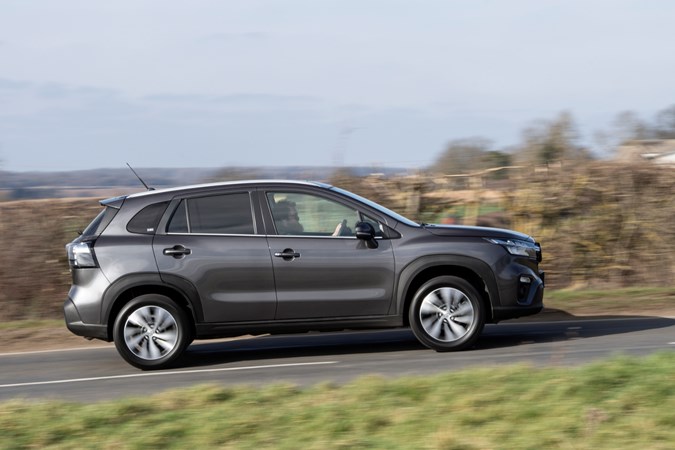
In-gear acceleration isn’t exactly sparkling, either. Because the engine has so little torque, the automatic gearbox always needs to change down at least two gears when you floor the throttle. That spikes the revs past 4,000rpm and makes the cabin quite noisy.
Full throttle gearchanges are jerky, too, but you can smooth those out by switching the transmission to manual mode and using the paddles behind the wheel. To get the best results, you need to treat the gearbox more like a manual and lift off the accelerator between changes.
Don’t try to lock the transmission in a gear and accelerate, though – the engine hasn’t got enough grunt for that. We tried accelerating between 60mph and 70mph on the motorway, with the gearbox locked in sixth. It took an agonising eight seconds.
It certainly isn’t one of the best hybrid cars on the market. Suzuki’s self-charging hybrid system is more expensive and much slower than its mild hybrid system and, as we mentioned on the previous page, it offers negligible fuel economy benefits in the real world. We can’t help but think the system would have been better if Suzuki had based it on its excellent 1.4-litre Boosterjet engine. Sadly, the emissions simply didn’t stack up.
What’s it like to drive?
- Entertaining
- But quite loud
- Light controls
The S-Cross is a very easy car to drive. The steering, clutch and brakes are all feather light, which makes it easy to manoeuvre and drive. On the flip side, the steering is a touch too light for keen drivers. You don’t get much of a feeling from the road through the wheel and, if you take a roundabout too quickly, you’ll have to dial in a bit more lock than you’d expect.
Spend enough time in the car, and you will acclimatise. Then, you can appreciate the suspension system. It’s soft, which means it soaks up enormous bumps with ease. And, because the S-Cross is so light, it doesn’t drop into potholes like an anvil – it glides over the top of them.
The full hybrid model is a little less rewarding. The automatic gearbox and wheezy engine kill a lot of the fun, but the extra weight of the battery pack over the rear helps to even out the chassis. It’s arguably more balanced than the standard car, which makes it even more predictable in the bends.
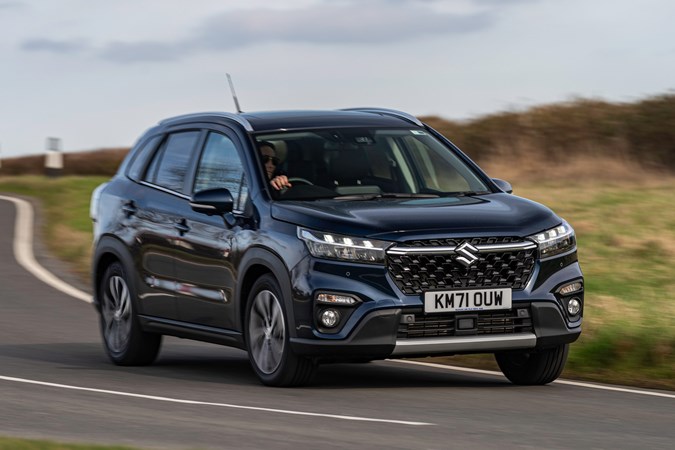
All versions of the S-Cross are loud, though, especially at speed. Road, wind and engine noise passes straight through the thin sheet metal (and the rather meagre sound deadening) and into the cabin. So, you need to weigh up what’s more important to you – driving around in a sound-sealed box or reaping the fuel economy benefits of lightweight engineering.
Four-wheel drive models get four driving modes to choose from too. Auto mode keeps everything normal. Sport mode backs off some of the steering assistance, sharpens up the throttle and engages the rear axle when you accelerate or when the system thinks you’re losing traction.
Snow mode sticks the drivetrain in four-wheel drive and numbs your throttle inputs to help keep the wheels turning in tricky conditions. Lock mode locks the chassis in four-wheel drive, but only up to around 30mph, after which it defaults to Auto mode.


